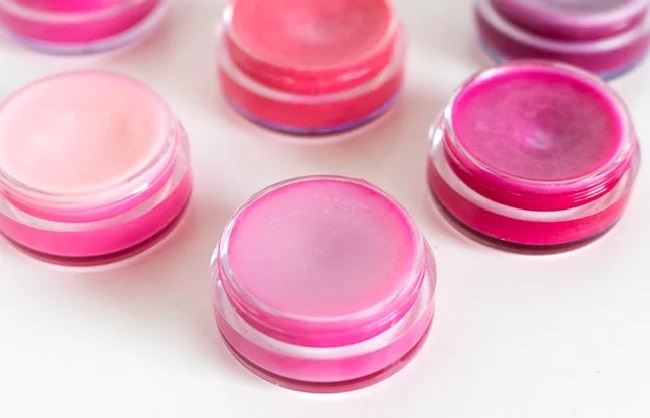If you want to save money on cosmetic products or just want to avoid using any preservatives, learning how to make your own lip gloss is a terrific skill to have.
The Ingredients of Lip Gloss.
Lip gloss is a type of cosmetic used to achieve the appearance of fuller, glossier lips. Like lip balm, this product might also help keep your lips hydrated and healthy.
Ingredients including emollients (such lanolin, jojoba, or coconut oil, which help the skin trap moisture), pigments (for colour), and wax (like beeswax or candelilla wax, which helps the gloss stay) are common to most recipes for cosmetic grade lip gloss.

Some varieties of lip gloss, similar to many skincare products, include sun protection factors (SPF), anti-aging compounds (such as hyaluronic acid), and fragrant oils.
What Ingredients does Lip Gloss Necessitate?
Lip gloss may be made at home using natural ingredients, in any shade or scent you like. The materials required to create your own are as follows.
base element: Castor oil (for shine), olive oil (for moisture), coconut oil (which stretches the lip gloss base), vitamin E oil (an antioxidant), and shea butter or beeswax (thickeners) are all you need to make your own signature high-shine lip gloss.
Culinary Utensils: You can’t make a lipgloss without using a stove or microwave to melt the base ingredients. Make sure you have the right amount of each item by using measuring spoons. Beeswax and other components should be melted together in a double boiler, but a small glass basin and a skillet would serve in a rush. To combine the components, use a whisk. Have a pipette handy in case you need to transfer the lip gloss to smaller containers.
Perfume oils: You can give your lip gloss a nice scent by adding three to six drops of essential oils, such as peppermint, rose, or lavender. Peppermint oil is a mild lip plumper.
Tubes of lip gloss: Make your own lip gloss in a portable container like a tube or tin. If you prefer a tube, be sure it has a built-in applicator.
True lip shade: Unless you’re going for a transparent lip gloss, you can add natural colouring agents and tints to your mixture. Lip gloss gets its shimmer from mica powder, a natural stone-based shimmer powder that may be found in a wide range of colours. The powdered beetroot used to colour the gloss imparts a subtle red hue.
Recipe for Homemade Lip Gloss:
Even though their functions are different (lip balm moisturises, while lip gloss adds shine), homemade lip balm and lip gloss foundation recipes are very similar. Thankfully, making your own natural lip gloss is a simple DIY effort. DIY lip gloss without any unnecessary additives?
- Prepare your work area. Make sure you have enough of counter space near your stove so you can combine your gloss ingredients there while they melt. Put everything you’ll need, from ingredients to equipment, out on the counter.
- Disposables should be laid out. Lip gloss tubes should be opened and placed in a convenient location on your work surface before being filled.
- Stir the ingredients together until they are melted. Use a double boiler to melt the wax. Combine three-quarters of a tablespoon of olive oil with half a tablespoon of coconut oil and one-and-a-quarter tablespoons of castor oil. In place of a double boiler, you can heat one to two inches of water below a heat-resistant glass bowl to get the same result.
- Take the bowl away from the hob. Remove the mixture from the heat and keep stirring until it reaches room temperature.
- Include vitamin E. Mix in some beetroot powder, mica powder, vitamin E, and essential oils to the melted mixture. Gradually build up the particles until you achieve the desired colour.
- The lip gloss can go. Put the liquid gloss foundation into the containers using the pipette. Gloss should be cooled to room temperature with the lid removed until solid before being used.
Initiating a New Skincare Routine
Different people have varying degrees of sensitivity to substances used in cosmetics and personal care items. If you have sensitive skin, see a dermatologist before using a new skin care product. This essay is not intended to replace medical consultation with a qualified health care provider.









































